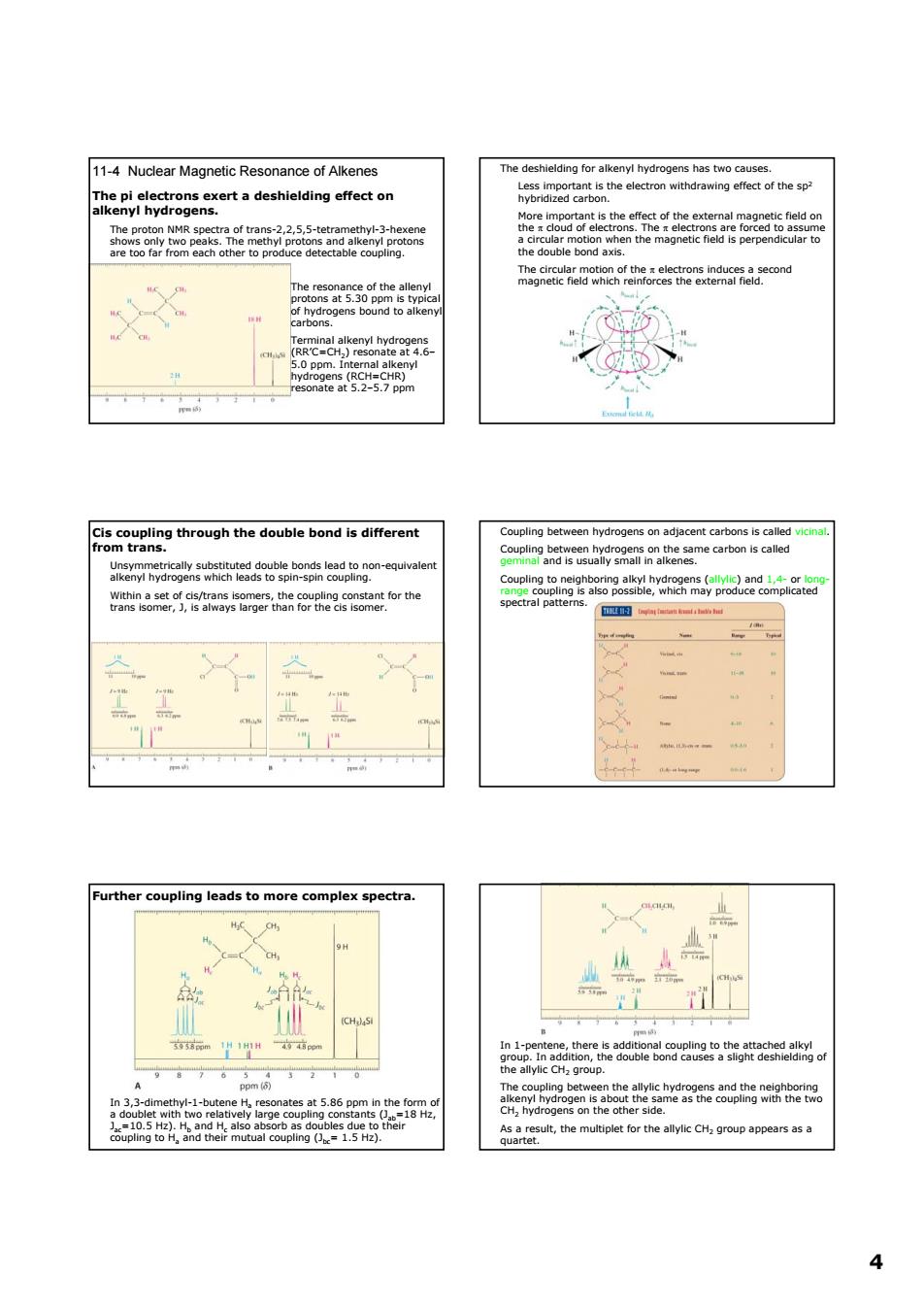正在加载图片...

11-4 Nuclear Magnetic Resonance of Alkenes the ele e9eegoeornioeseeaemseaecoad 5.0 ppm thoug the doubl bondsdiferent coupling leads to more complex spectra ” a。 4 4 11-4 Nuclear Magnetic Resonance of Alkenes The pi electrons exert a deshielding effect on alkenyl hydrogens. The proton NMR spectra of trans-2,2,5,5-tetramethyl-3-hexene shows only two peaks. The methyl protons and alkenyl protons are too far from each other to produce detectable coupling. The resonance of the allenyl protons at 5.30 ppm is typical of hydrogens bound to alkenyl carbons. Terminal alkenyl hydrogens (RR’C=CH2) resonate at 4.6– 5.0 ppm. Internal alkenyl hydrogens (RCH=CHR) resonate at 5.2–5.7 ppm The deshielding for alkenyl hydrogens has two causes. Less important is the electron withdrawing effect of the sp2 hybridized carbon. More important is the effect of the external magnetic field on the π cloud of electrons. The π electrons are forced to assume a circular motion when the magnetic field is perpendicular to the double bond axis. The circular motion of the π electrons induces a second magnetic field which reinforces the external field. Cis coupling through the double bond is different from trans. Unsymmetrically substituted double bonds lead to non-equivalent alkenyl hydrogens which leads to spin-spin coupling. Within a set of cis/trans isomers, the coupling constant for the trans isomer, J, is always larger than for the cis isomer. Coupling between hydrogens on adjacent carbons is called vicinal. Coupling between hydrogens on the same carbon is called geminal and is usually small in alkenes. Coupling to neighboring alkyl hydrogens (allylic) and 1,4- or longrange coupling is also possible, which may produce complicated spectral patterns. Further coupling leads to more complex spectra. In 3,3-dimethyl-1-butene Ha resonates at 5.86 ppm in the form of a doublet with two relatively large coupling constants (Jab=18 Hz, Jac=10.5 Hz). Hb and Hc also absorb as doubles due to their coupling to Ha and their mutual coupling (Jbc= 1.5 Hz). In 1-pentene, there is additional coupling to the attached alkyl group. In addition, the double bond causes a slight deshielding of the allylic CH2 group. The coupling between the allylic hydrogens and the neighboring alkenyl hydrogen is about the same as the coupling with the two CH2 hydrogens on the other side. As a result, the multiplet for the allylic CH2 group appears as a quartet